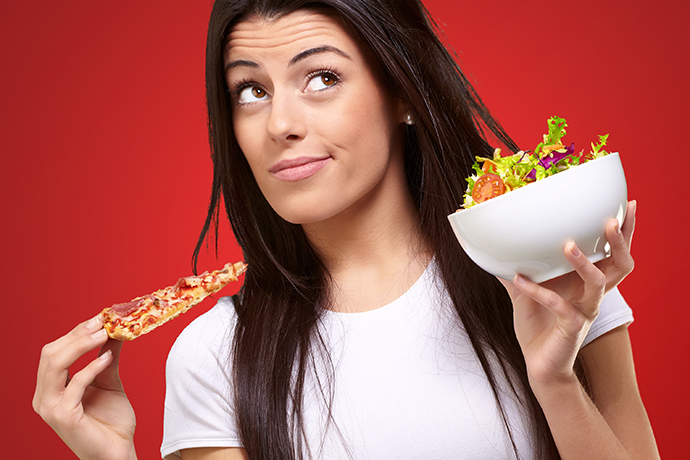Ask an Expert: Check Your Hunger/Fullness Scale and Become a Mindful Eater
 Congratulations! You made it through the holiday season. As we are starting into the New Year, most of us have hit the reset button and have wellness on our minds. One of the things I hear most from people is how they need to cleanse from the holidays, so their answer is to go on a diet. A lot of those diets promise results of rapid weight loss by either removing or limiting certain foods, only eating certain food combinations, following a strict food intake pattern or taking a supplement. The bottom line is simple: if a diet or product sounds too good to be true, it probably is. Instead of a diet this year, why not try something that will stick?
Congratulations! You made it through the holiday season. As we are starting into the New Year, most of us have hit the reset button and have wellness on our minds. One of the things I hear most from people is how they need to cleanse from the holidays, so their answer is to go on a diet. A lot of those diets promise results of rapid weight loss by either removing or limiting certain foods, only eating certain food combinations, following a strict food intake pattern or taking a supplement. The bottom line is simple: if a diet or product sounds too good to be true, it probably is. Instead of a diet this year, why not try something that will stick?
Mindful eating is not a diet, but a practice that focuses on how we eat, not just what we eat. Mindful eating involves eating slower and deliberately, avoiding distractions while eating (yes, step away from your desk to eat lunch), listening to your body’s hunger and fullness cues, eating food that tastes good and is full of nutrients and being aware of your emotions.
Most of the food we eat is not directly related to hunger, but is often due to social activities, distractions or emotions such as stress, sadness or boredom. In order to start practicing mindful eating, first check in with your body. Do you notice a dull headache? Would someone use the word hangry to describe your mood? Or maybe you are on the opposite end, feeling content and ready for a nap?
Below is the hunger and fullness scale. This tool is something you can start using today, without having to go out of your way. Most people recognize that they are hungry well past the first signs of hunger and then eat past the point of fullness. The time to start eating is when you are at a four, and the time to stop eating is when you are at about a five.
Hunger and Fullness Scale
1-dizzy/shaky; 2-irritable/headache; 3-growling stomach; 4-signal of hunger; 5-physically full; 6-satisfied; 7-slightly uncomfortable/tired; 8-need to unbutton pants fullness; 9-Thanksgiving fullness; 10-feeling sick
Becoming a mindful eater takes time and practice. The ability to recognize your own hunger and fullness cues will help you as you become a mindful eater. For more information, check out this factsheet: Mindful Eating: Benefits, Challenges, and Strategies.
By: Jaqueline Neid-Avila, Utah State University Extension assistant professorWhat Next?
Get useful tips like this as soon as we release them. Sign up here.


 Utah 4-H & Youth
Utah 4-H & Youth